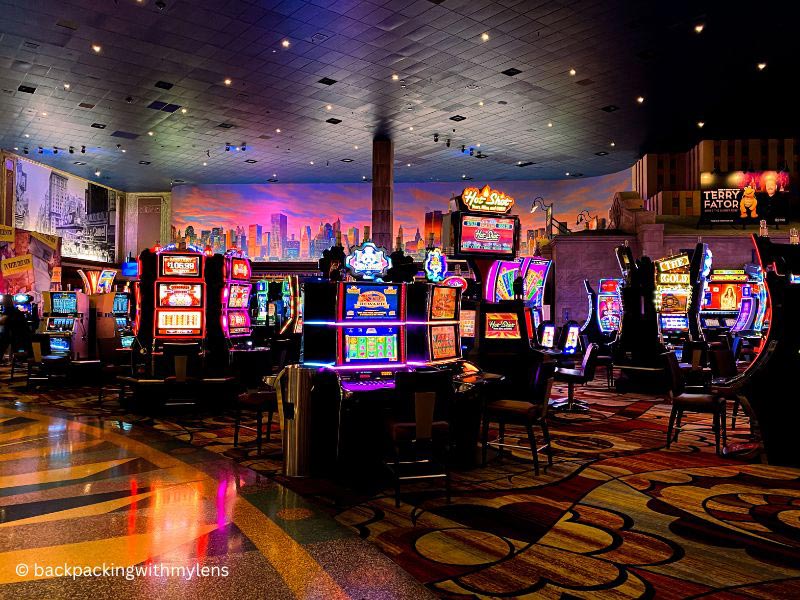The Psychological principles Behind Gambling Game Design

Casino experiences have long captivated the human imagination, drawing participants into a universe filled with chance, strategy, and the allure of adventure. Each activity is carefully crafted not just for entertainment, but also to inspire targeted emotional responses that keep players involved and invested. Understanding the motivations behind these designs reveals much about how behavioral psychology plays a vital role in the gaming experience.
From the vivid lights and dynamic sounds to the complex layering of guidelines and rewards, casino games are designed to create an atmosphere of anticipation and anticipation. Game designers leverage psychological principles to influence player behavior, whether through the use of jackpots, almost wins, or social connections. MCW77 By examining these factors, we can better appreciate how casino games fulfill not just a need for entertainment, but underlying psychological needs for thrill and hazard.
Grasping Player Behavior
Casino games are designed with a thorough comprehension of gamer psychology, which is crucial for drawing in and retaining players. The thrill of the game, alongside the expectation of winning, establishes a strong draw. Game designers employ elements like audio cues, vibrant graphics, and engaging gameplay to engage attention and evoke emotional responses. These sensory experiences enhance the immersive experience, making players feel more involved in the game.
Another notable aspect of player behavior is the concept of risk and reward. Casino games often manage high-risk scenarios with the potential for substantial rewards, which can cause the phenomenon known as near-miss phenomenon. When players come near to winning, the brain releases dopamine, reinforcing their behavior and motivating them to persist playing in pursuit of that elusive win. This cycle of wish and frustration plays a crucial role in how games are structured and marketed.
Lastly, social elements also play a central role in player behavior at casinos. Many games are designed to be played in groups or in company with other players, creating a sense of togetherness and communal experience. The community engagement inherent in games like blackjack enhances enjoyment and can lead to longer play sessions. Designers take advantage on this by creating environments that invite players to stay, interact, and come back, making the overall casino experience more attractive.
The Role of Imagery and Sound
Visuals and audio play a significant role in enhancing the gambler’s experience within casino games. Designers utilize bold colors, eye-catching graphics, and engaging animations to capture gambler's attention and maintain their interest. The use of themes, such as adventure or luxury, helps create an immersive atmosphere that transports players into another world. By appealing to the senses, these elements add to a intensified emotional response, encouraging players to engage more profoundly with the games.
Sound design is equally important in reinforcing the overall experience of casino games. The combination of ambient music, audio effects for successful combinations, and environmental noises creates an auditory landscape that keeps players fascinated. Audio cues associated with wins, such as ringing bells or festive music, evoke feelings of excitement and satisfaction, encouraging players to continue playing. These audio cues are strategically placed to amplify the thrill of the game and create a more engaging experience.
Additionally, the alignment of imagery and sound is important for reinforcing the game's overall theme and atmosphere. Each element should coordinate seamlessly to create a cohesive experience that pulls players in. The effective use of this integration not only enhances user enjoyment but also increases the chances of repeat play, as players become more engaged in the immersive world that the gambling games offer. This thoughtful combination of visuals and sound ultimately enhances player engagement and commitment.
Incentive Structures and Engagement
The creation of gambling games significantly depends on incentive systems to keep players involved and coming back for additional experiences. These structures are based in behavioral principles that take advantage of human behavior and desire. Players are often motivated by the excitement of winning, which is supported by immediate feedback through the game's mechanics. This prompt satisfaction not just enhances the overall experience but also cultivates a feeling of achievement, encouraging participants to keep participating in hopes of greater gains.
Casinos implement various incentive systems, such as large payouts, extra rewards, and multipliers, to captivate players. These elements create a level of excitement that maintains interest. Additionally, the randomness of results plays a significant role in keeping interest. The intermittent reinforcement schedule, where wins are unpredictable but occur often enough, keeps players on edge and motivated to continue participating. This cycle of anticipation and anticipation is essential to the success of gambling experiences.
Moreover, community aspects, such as tournaments and multiplayer features, enhance the participation factor by tapping into the desire to compete of participants. The shared experience of playing with fellow participants can amplify the thrill of winning and create a community atmosphere within the gaming space. By integrating these community elements with efficient reward systems, gambling experiences don’t just provide entertainment but also nurture a deeper connection among players, solidifying their loyalty to the gaming experience.
